At any institution of higher education, it isn’t just the students who change every year. Here are some other recent transitions at DMU.
College of Health Sciences
Expanding enrollment, evolution in physical therapy
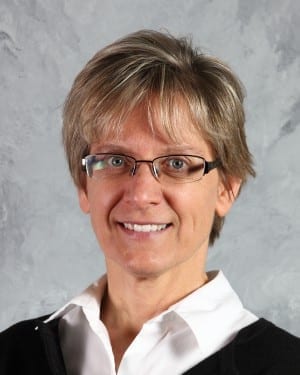
For most institutions, it’s a happy problem to have: Since Jodi Cahalan became dean of the College of Health Sciences (CHS) in 2006, total enrollment in its five programs has grown 35 percent to nearly 700 students. To better accommodate the needs and issues that surround an increasing enrollment, Teri Stumbo, P.T., M.S., ABD, was promoted to full-time associate dean for academic and student affairs on July 1, 2012.
After joining the physical therapy faculty in 1989, Stumbo also has held administrative positions within the college, most recently as chair/program director of the post-professional doctor of physical therapy (PPDPT) program and as part-time CHS associate dean for several years.
“With several of our programs continuing to rank as the fastest growing or most sought-out graduate programs in the country, interest in the degrees we offer shows no sign of slowing down,” says Cahalan, Ph.D., M.P.H.’01, M.S.’93, PA-C’89. “Coupled with our students’ first-time pass rates on national certification licensing exams – 98 and 93 percent to date for the doctor of physical therapy and physician assistant classes of 2012, respectively – the college is well positioned to continue its history of providing exceptional graduate education.”
Other changes in the college relate to national trends in physical therapy. In 2000, the American Physical Therapy Association House of Delegates adopted “Vision 2020” for the profession’s future, which states in part that by the year 2020, physical therapy will be provided by doctors – not masters – of physical therapy. To reflect this vision and meet the needs of students and their future patients, CHS reorganized and developed a new department of physical therapy, led by Traci Bush, P.T.’95, OTR/L, D.H.S. Bush has been the chair/program director of DMU’s doctor of physical therapy (DPT) program as well as associate professor.
The new department includes the entry-level doctor of physical therapy program, the DMU Physical Therapy Clinic and a new area for postgraduate studies, which includes the previously existing post-professional doctor of physical therapy program. It also will offer postgraduate opportunities for other individuals.
“Bringing together the DPT and PPDPT faculty and the PT clinicians will allow a sharing of talents and skills across all programs,” Bush says. “Department personnel will work together to not only meet the needs of students but also to create new, exciting programming for non-degree-seeking individuals. That will include a robust continuing medical program for physical therapists as well as programming to assist therapists seeking professional licensure.”
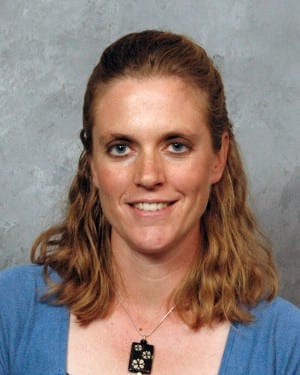
Changes in the program include the addition of Michelle Brown, M.S.P.T.’99, to the staff of the Physical Therapy Clinic. She brings to students her highly hands-on experiences as a physical therapist in Jamaica, which she first visited on a medical service trip while on staff at Allen Hospital in Waterloo, IA. That evolved into a three-year stint in the Caribbean island nation, where she worked in a reduced-fee clinic and went on house calls.
“Sometimes we had electricity, sometimes not. My training at DMU was very manually oriented, so I felt well prepared,” she says. “I thrive on minimal resources.”
Brown first worked with DMU physical therapy students who traveled to Jamaica to provide treatment during a “camp” for stroke victims.
“It’s nice for students, because they participate in treatment but also gain cultural exposure,” she says. “They improve their skills in how to talk to patients.
“I’ve had so many good mentors, it’s nice to be able to give that back,” Brown adds. “It’s fun to watch students when they first come in with that deer-in-the-headlights look, then to see them evolve and help them develop. It’s exciting.”
College of Osteopathic Medicine
Transitions at the top
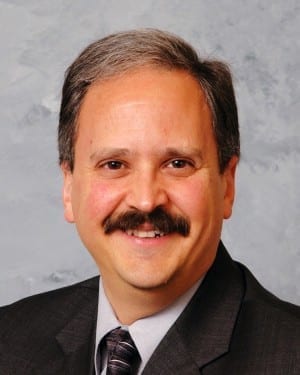
In July, David Plundo, D.O.’85, M.P.H.’11, FACOFP, associate dean of the College of Osteopathic Medicine (COM), was appointed the college’s acting dean. Kendall Reed, D.O., FACOS, FACS, who had served in that role since 2003, stepped down and remains a tenured faculty member who is now on sabbatical.
“I am grateful to Dr. Reed for his many contributions and years of service to the University,” says DMU President Angela Walker Franklin, Ph.D. “DMU will continue working to achieve our goals and maintain excellence in all that we do.”
In addition to his DMU degrees, Plundo holds an undergraduate degree in biology from the University of Pittsburgh. He was an assistant professor of family medicine at DMU from 1988 to 1992. After serving as director of a family medicine residency program in Toledo, OH, and vice president of medical education at Garden City Hospital in Michigan, he returned to DMU in 2006 as associate dean for clinical affairs. He became associate dean for medical education in 2008.
Plundo will serve as acting dean pending a formal search for a new dean.
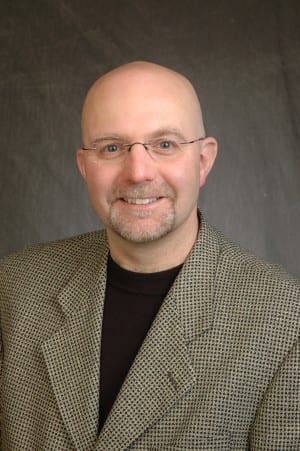
In August, Richard Schuster, D.O., ABOFP, was appointed interim chair of family medicine. Roberta Wattleworth, D.O., M.H.A.’99, M.P.H.’04, FACOFP, FNAOME, served in that position from July 2003 to April 2012. She continues as a professor of family medicine. A search is under way for a permanent chair of family medicine.
A member of COM’s osteopathic manual medicine faculty for four years, Schuster graduated from the Ohio University College of Osteopathic Medicine and completed an osteopathic family medicine residency in Sandusky, OH. He is board-certified by the American College of Osteopathic Family Physicians and the American Osteopathic Board of Neuromusculoskeletal Medicine.
College of Podiatric Medicine and Surgery
New medical faculty member not new to DMU
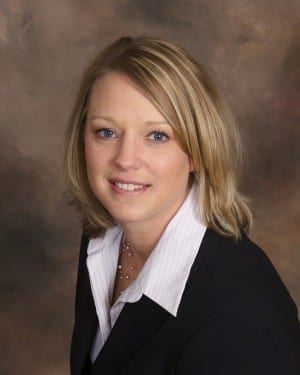
So Feilmeier begins a new chapter in her podiatric career, combining teaching and clinical practice. The new assistant professor in the College of Podiatric Medicine and Surgery and physician in Foot and Ankle says she can still picture herself in her students’ shoes. As a classmate of fellow Assistant Professor Kathy Frush, D.P.M.’05, and a former student of several of her new colleagues, she jokes, “I knew what I was getting myself into.”
In high school in eastern Iowa, however, Feilmeier was sure she didn’t want to go into medicine. “But I knew I wanted to help people – I know that sounds altruistic,” she says. Rick Lampe, Ph.D., a biology professor at Buena Vista University, her undergraduate alma mater, became her mentor; he encouraged her to explore podiatry as a profession and helped her set up shadowing opportunities.
“What drew me to the profession was that I would be able to treat patients of all ages and have the ability to perform surgery. The profession offers so many facets,” says Feilmeier, who did her residency at Trinity Regional Medical Center in Fort Dodge, IA. Her colleagues then asked her to join them in practice and subsequently open a “satellite” office in Spirit Lake, IA, where she practiced for five years. That made her an advocate for podiatric medicine as well as a physician.
“I did a lot of community speaking when we first opened that office,” she says. “I had to work to get my name out in the community and educate people on the services I could provide.”
Feilmeier strives to be active in her profession, serving on the board of the Iowa Podiatric Medical Society and on the Iowa Podiatric Licensing Board. She also is a young physician liaison to the American Podiatric Medical Association.
“Part of my job here at DMU is providing service to the community and the podiatric profession,” she says. “Today, there are so many opportunities to become an advocate for the profession, and I feel it is important for each of us to play an active role.”

